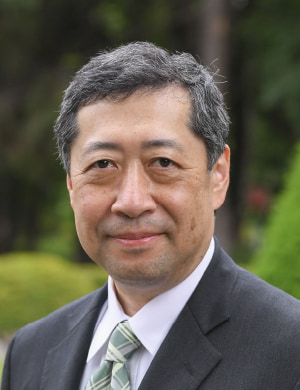Welcome Message

The 70th Annual General Assembly and Scientific Meeting of the Japan College of Rheumatology
Congress President
Tatsuya Atsumi,M.D.,Ph.D.
Professor, Department of Rheumatology, Endocrinology and Nephrology,
Faculty of Medicine and Graduate School of Medicine, Hokkaido University

The poet, novelist and translator Sei Ito (1905-1969) spent his school years in Otaru, Hokkaido. Every day, he took the train from Shioya Village to Otaru Junior High School (now Otaru Choryo High School) and Otaru Higher Commercial School (now Otaru University of Commerce). Many of his poems reflect what he experienced and felt during his days as a student. His self-published poetry collection “Yukiakari no michi (Snow-lit road)” is a lyrical anthology replete with verses evincing Ito’ s sensibilities as a teenager in the Taisho era.
Ito fell in love with the daughter of a fisherman living in Oshoro, a village not far from his home in Shioya. In his collection of poems many of which are set amidst the winter and snow, Ito’ s poem “When Summer Comes” stands out as a literary gem penned on a summer’ s day. It was on one summer day surrounded by lush greenery that the girl smiled at him as they happened to pass each other on a str eet in Otaru. Her smiling face invoked in him something powerful. Despite his inability to express his feelin gs to her, he silently vowed to pray the happiness would never fade from her smile even as she would someday become someone’ s wife and a mother.
The 70th Annual General Assembly and Scientific Meeting of the Japan College of Rheumatology will be held while the crisp green of spring dazzles Fukuoka. Looking back over these 70 years, it is clearly evident to me that tremendous progress has been made in treating rheumatic diseases. When the Japan College of Rheumatology was founded 70 years ago, the probability of patients with systemic lupus erythematosus (SLE) surviving three years was roughly 60%. The availability of high-dose glucocorticoid t reatment has been lifesaving, but it has also significantly affected patients’ metabolisms, imposing significant restrictions on their lives due to complications arising with its long-term administration. However, intermitten t intravenous cyclophosphamide therapy was introduced about 35 years ago, mycophenolate mofetil approximately 15 years ago, the first biological agent around 8 years ago, a biological agent having a different mechanism some 4 years ago, and a new calcineurin inhibitor with high efficacy for nephritis just two years ago. O ver the years, effective medications have been approved and used to treat SLE. Advances in therapeutic drugs and treatment protocols have gradually reduced the dependence on glucocorticoids with their severe side effects. Japan’ s SLE clinical practice guidelines stipulate the goal is to achieve “social remission,” a state where patients are able to lead lives that are essentially not that different from individuals without SLE. This lofty goal is now a reality. The progress made in treating rheumatoid arthritis has accelerated even faster. 70 years ago, many patients’ lives were impaired and lifespans shortened on account of severe joint destruction. 40 years ago, methotrexate was approved in the United States. Patients using this drug were able to control their arthritis remarkably better. Then, 20 years ago, biological agents and anti-cytokine therapies emerged. This successful achievement has completely changed joint prognosis and even treatment goals. One might even say that rheumatoid arthritis t reatment has undergone a paradigm shift. Moreover, thanks to targeted synthetic disease-modifying antirheumatic drugs, which became available just 10 years ago, oral medication may now be used to achieve equal to or better the effectiveness of biological agents. These have broadened treatment options for patients, which may now be tailored to their condition and lifestyle. A look back over these 70 years shows that the advances made in these treatments have literally been exponential. The progress made in treatments has brought smiles to patients’ faces. When patients once again smile as they did before onset of their illness, this makes not only the physicia ns and medical staff, but everyone involved in autoimmune disease and rheumatology care smile also. Nevertheless, there are still some patients unable to achieve remission with current medications. Some relapse even after remission and others suffer from complications during long-term treatment impairing their quality of life. One thing that we need to do going forward is to further propel our research on the causes of autoimmune diseases and rheumatic conditions to develop new remedies with high remission rates, and the second is to develop and establish treatment protocols and surgical procedures that will have a long-lasting effect without complications and preserve quality of life. We must not let the success achieved in rheumatology over these 70 years go to our heads. We need to continue our efforts and be even more dedicated so that the happiness never fades from the smiling faces of our patients or from the smiling faces of the medical professionals involved in the treatment of rheumatology and autoimmune disease care.

